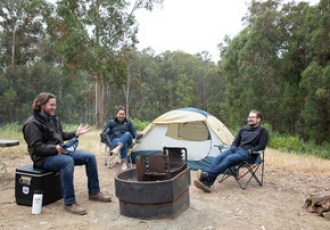BestReviews is reader-supported and may earn an affiliate commission. Details
We recommend these products based on an intensive research process that's designed to cut through the noise and find the top products in this space. Guided by experts, we spend hours looking into the factors that matter, to bring you these selections.

Every hunter knows you can have the best deer stand in the world, wear all the right deer scents and camouflage clothes, and have the best scope on the best rifle, but if a deer doesn’t come by, none of that matters. Somebody else will get that trophy deer that should have been yours if you can’t find a way to get the deer to come to you.
Putting your blind near a deer trail certainly improves your odds, but why not improve the odds even more by using the best deer call you can get? A deer call uses the deer’s instincts against them, luring them in with various sounds. The right call for you depends on several factors, including whether you’re hunting doe or buck. (It’s not supposed to matter, but it often does.) The choice between a call made of wood, metal, or plastic is another conundrum you may find yourself caught in.

Doe and buck seasons are separate in some states. In others, they take place at the same time or overlap by a week or two. If you live in a state with separate doe and buck seasons, you’ll be hunting them one at a time. You don’t necessarily have to get a deer call for each one, but it’s not a bad idea.
Some deer calls sound better when you’re making fawn bleats or doe rutting bleats than when you’re making the deeper, more guttural sounds of rutting bucks. Other deer calls work better in the opposite direction. Many manufacturers tout their products as being able to call both does and bucks equally well, but that’s not always the case.
If you get two different deer calls, you can set each one to the best tone or grunt and leave it there without having to adjust it every time you use it.
Deer calls are only used for a few weeks out of the year. The rest of the time, they’re in a storage shed or a closet somewhere. You need a deer call that is rugged enough to last through your expeditions and stay intact while boxed in storage, too. Deer calls are cheap enough that you could probably buy a new one each year, but once you’ve found one you like, chances are you’d prefer to keep it.
The material a deer call is made from has a huge impact on its ability to make sounds as well as its durability.
Wood: Some hunters consider wood to be the all-around best material for a deer call. Wood can be oiled to keep it from drying and cracking. It resists freezing during cold weather, and with proper care, it can last for decades.
Metal: Deer calls made from metal are extremely rugged and durable, but freezing is definitely a problem with them. Putting your lips to an ice-cold deer call might not be your idea of fun.
Artificial: Artificial materials such as ABS plastic, rubber, and nylon are popular with deer call manufacturers, but they are subject to weakening from the sun’s UV rays. They can also become stiff during cold weather. Repeated exposure to alternating high and low temperatures can result in them becoming brittle.
No two deer call models are exactly the same. Make sure the deer call you get comes with complete instructions on how to use it to produce the correct sounds.
Some instructions come on a DVD, which you can conveniently watch and hear. If the deer call you like doesn’t come with instructions, you should rethink it unless you’re an experienced deer caller.
Metal and plastic are prone to condensation. If those water drops get down inside the call, they can alter the way it sounds. Double-check the description to see what the manufacturer says about condensation forming on the deer call. If you don’t see anything about it, check the material it is made of. If it is made of metal or plastic but you still like it, get a small cloth bag to carry it in or something to dry it with.
Deer season comes in the fall when the temperatures start to drop. Many manufacturers tout their deer calls as being freeze-resistant. In those with moving parts such as slides, this is particularly important. Read the description closely to make sure the deer call isn’t going to freeze on you.
The least-expensive deer calls cost $6 to $10. Deer calls in this range are functional, but some are a little on the rough side. You may experience problems with the call freezing in frigid weather.
For $10 to $30, you’ll find deer calls that work reliably and, with proper care, should last for many years. The sound quality is much better here.
From $30 to $100 (and sometimes more), you can find some gravity-activated “can” type of deer calls and electric deer calls.

A. Nothing is guaranteed, but using one could significantly improve your chances. Given the minimal cost, the purchase is well worth it.
A. This is a final “let’s get ready to rumble” signal from one buck to another that sounds like a drawn-out hiss. It’s a very aggressive call and should only be used if you know there are mature bucks in the area. Otherwise, you might scare off any younger bucks.
A. It simulates the sound of antlers clashing when two bucks are fighting. Other bucks and does in the area will be drawn to it out of curiosity, to see who wins.
Get emails you’ll love.
Learn about the products you’re wondering if you should buy and get advice on using your latest purchases.
